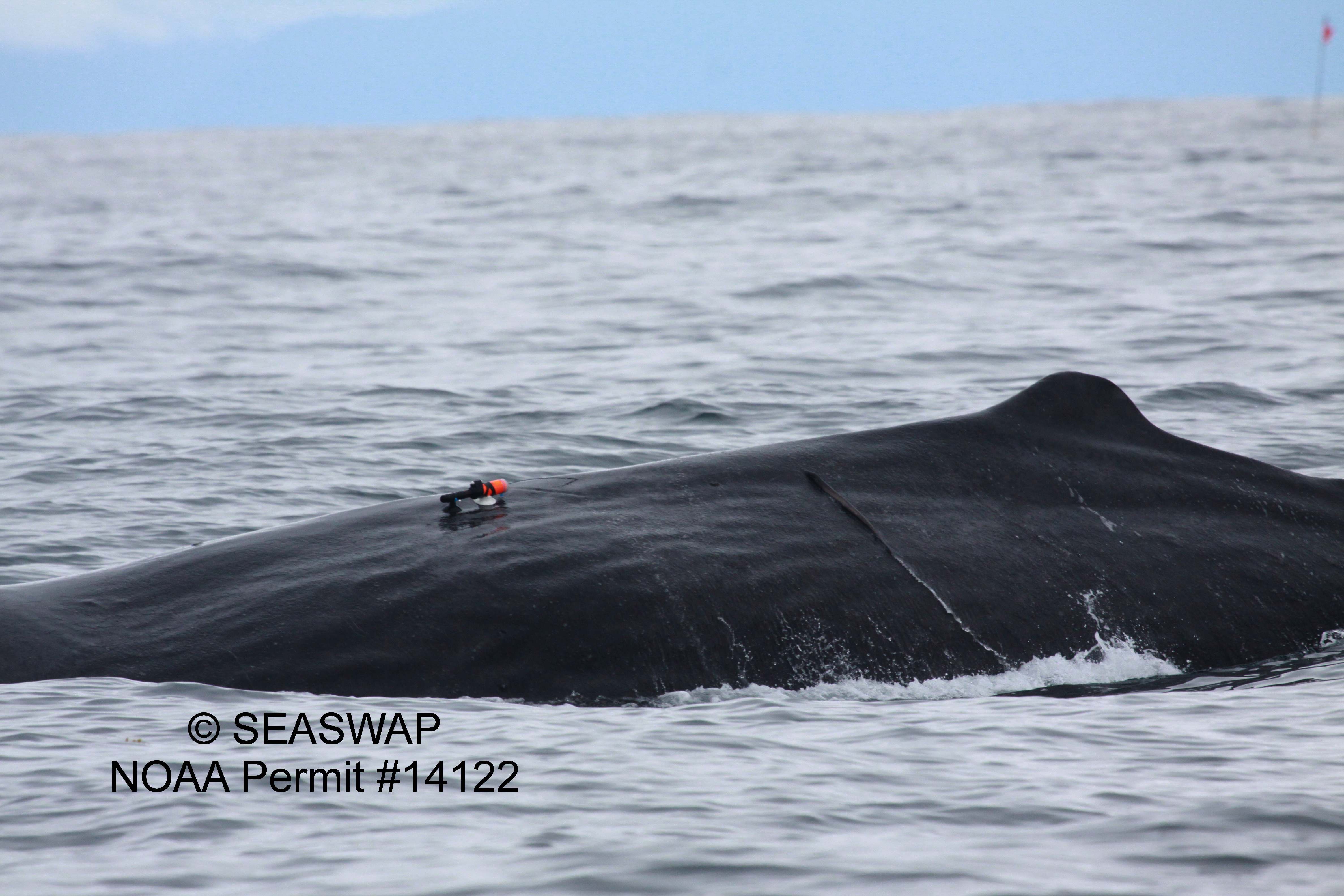VOCAL HUNTING
In 2003, hydrophone-equipped researchers working on the Southeast Alaska Sperm Whale Avoidance Project (SEASWAP) found that sperm whales are vocally active around fishing boats setting out and hauling in longline fishing gear. The sperm whales make short pulses called ‘clicks’ that seem to allow them to navigate, detect, and forage on individual prey items —in this case, hooked fish. Scientists think certain sounds of longline fishing may actually be attracting the whales. To find out if that’s true, researchers used an acoustical monitoring system to listen in on longline deployments and recoveries.
Long-term acoustic monitoring and tracking has traditionally been expensive, due to the costs of building, deploying, and retrieving an array large enough to detect and track sounds of interest over a few kilometers range. The researchers came up with an elegant solution – use the longline fishing gear itself as the anchor for an acoustical array.
ACOUSTIC TAG

They also used the newest stand-alone, or autonomous acoustic recorders available. The recorder weighs less than half a pound and has the ability to record continuously for up to 17 hours to a 1 GB Flash card. Sperm whale sounds produce a surface-reflected path, or “echo,” from the ocean surface that can be used to locate the animal while using only two acoustic sensors. The array not only detects sounds, but also tracks sperm whales in two or even three dimensions.
A longline vessel out of Sitka was chartered to do the acoustical work. The vessel set out the standard longline fishing gear along the ocean bottom, but when the final anchor was lowered, three recorders spaced 2 meters and 100 meters apart were attached to the anchor rope with electrical tape. They floated at a depth of 200, 198, and 100 m in the water column. The vessel then left the vicinity, leaving the instruments to record any sounds around the set longline gear.
Eight to 20 hours later, the boat returned and retrieved the longline gear and the recorders attached to it. The anchor line without the instruments was hauled in first to permit the vertical array to monitor the acoustic behavior of any whales in the vicinity of the longline as it was retrieved. Finally, the last anchor rope and instruments were recovered. This process was repeated every couple of days over a 3-week period.
The acoustic arrays have shown that the sperm whales appear to be foraging at around 50m when in the vicinity of longlines in the water, whereas they forage at around 250m when no longlines are in the water. It also appears that the sperm whales are attracted to the longline vessels when they were pulling their gear from the water by the noises the engine made while being engaged and disengaged, not by sounds made by the gear or hydraulic winches.